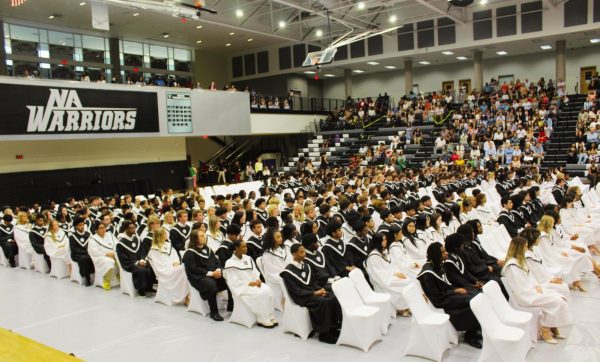Thrift Shopping: The Second-Hand Clothing Phenomenon
Bargain-O-Rama: Thrifty senior Lenox Johnson poses with some fashionable items she got on discount at an area thrift store.
Goodwill is making millions while designer brands are rolling in their graves. Second-hand clothing has made its way into the closets of students all over the school, and this quickly growing fad shows no signs of slowing.
Shopping second-hand has led many shoppers towards creating a unique style that is otherwise impossible to curate through ordinary retail chains and tired department stores. Before the resurgence of the fad, finding one’s stylistic individuality was a gruelling task, fortified by the monotonous mass production of trendy clothing and predictable ensembles. Straying away from these typical stylistic tendencies has revolutionized the fashion taste countless individuals.
In terms of practicality, thrift shopping takes the win for saving students big bucks. At your average clothing store, a shopper can spend over $30 dollars on one basic item. At a thrift store, a customer can get five times as much for the same price. Oftentimes, thrift shoppers can find high end, or even designer items for a fraction of the price.
A big contributing factor to the influx of second-hand shopping is the huge stream of social media promotion of the concept. Social media influencers are known for thrift shopping videos and posts reading captions like “Thrift with Me” or “Thrift Haul.” The idea of shopping second hand was once foreign to many, but now, it’s simply the norm. Unlike any other trends, thrift shopping promotes living affordable and sustainably, so it’s constant promotion has changed stylistic culture for the better.
In the past few years, popular culture has seen a revival in “throwback” fashion. From the resurgence of scrunchies to the rising popularity of eighties inspired denim, the 70s, 80, 90s, 2000s are no stranger to the uniqueness of the 2010s. The mass culmination of fashion throughout history has made this generations style one unlike any other.
While thrift shopping is mostly known for saving money, it also saves the planet. Shopping second-hand is a great way to live a sustainable lifestyle that strays from the environmental cost of fast fashion. Shopping from large chain stores is a tempting practice, but the repercussions quickly negate the benefit of its convenience. Thrift shopping is undoubtedly fun and trendy, and it has the power to make a difference in the lives of those who need it most. Next time you need to shop until you drop, consider shopping second-hand- it could change someone’s life.











